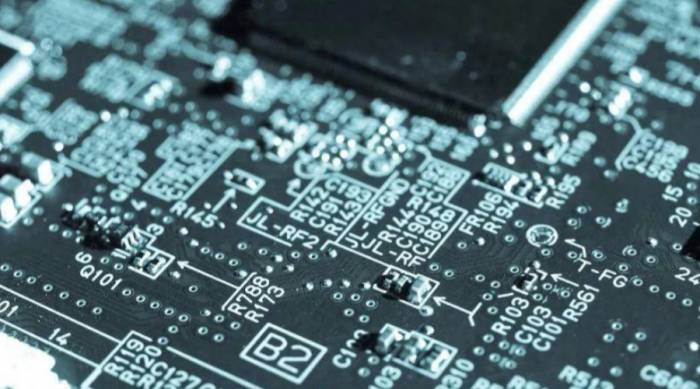The EU uses RISC-V to seek chip sovereignty
These initiatives aim to reduce Europe's dependence on American and Asian chip manufacturers.
The European Union is heavily investing in efforts to achieve chip independence by leveraging the RISC-V open-source architecture. This work is led by the Barcelona Supercomputing Center (BSC), which has been a pioneer in the development of RISC-V technology.
EU leaders have recently proposed several measures to promote the development of RISC-V-based chips in response to concerns about member states' reliance on foreign semiconductor companies. The recent global chip shortage has disrupted supply chains and highlighted the importance of chip sovereignty, intensifying these concerns.
RISC-V is an open-source instruction set architecture that is not owned by any single company. This makes it an attractive option for the EU, offering greater flexibility and security.
The Barcelona Supercomputing Center (BSC) is one of Europe's leading research centers, playing a key role in the development of RISC-V-based chips.
To learn more about Europe's semiconductor plans and the role of BSC, EE Times interviewed Mateo Valero, Director of the Barcelona Supercomputer Center, and Teresa Cervero, Chief Research Engineer at BSC.
Advertisement
BSC leads multiple RISC-V projects, including the European Processor Initiative (EPI) and its spin-off OpenChip project. EPI is a €70 million project aimed at developing a new generation of high-performance RISC-V processors. OpenChip is a company that commercializes BSC's RISC-V technology.BSC has begun manufacturing chips using the Lagarto series of CPUs, with the first tape-out in May 2019 using a 65-nanometer process. "Today, we are developing the fourth generation of the Lagarto core, with the goal of achieving 7-nanometer and beyond processes in the near future," said Valero.
BSC is also collaborating with other European companies and research institutions to develop a complete RISC-V ecosystem, including software tools, compilers, and operating systems.
Mateo Valero stated that these initiatives aim to reduce Europe's dependence on American and Asian chip manufacturers. He pointed out that Europe's lack of a robust chip industry is a significant security vulnerability, making Europe reliant on foreign suppliers for critical technologies. "RISC-V is the Linux of the hardware domain. It is an open-source ISA that no company owns. This makes it an attractive option for the EU because it offers greater flexibility and security," he said.
The EU needs to invest in chip manufacturing to enhance competitiveness.
Teresa Cervero, who is in charge of the European RISC-V program at BSC, agrees that chip sovereignty is crucial for Europe's security and economic interests.
Cervero noted that RISC-V is an ideal platform for achieving chip sovereignty because it is open-source and royalty-free. While acknowledging Europe's strengths in knowledge and design, she warns against unrealistic expectations of complete independence and emphasizes the complex ecosystem of the semiconductor industry.
Europe is rich in knowledge and has potential in the design and development of solutions. Public and private entities are taking some action to strengthen the manufacturing phase, creating infrastructure for it (cleanrooms). The medium-term bet requires not only economic investment but also talent that can utilize these facilities.BSC Hopes Next-Generation MareNostrum 6 Will Use RISC-V Processors
Initially, BSC attempted to use Arm-based processors in its supercomputers. They even utilized chips from Samsung Galaxy 4 smartphones. "We extracted chips from phones and connected thousands of phones," said Valero.

After Brexit and SoftBank's acquisition of Arm, Valero realized that the EU faced a problem: there would be no more proprietary European processors. "Until seven years ago, RISC-V emerged, like Linux in the hardware domain; this offered the possibility for anyone in the world, including Europe, to manufacture processors. Because the instruction set is not determined by the United States, Europe, or China, it is global."
In 2019, Mateo Valero persuaded the European Commission to help initiate the production of RISC-V-based supercomputing chips. That was when the European processor initiative began.
"EPI is an industrial project where there will be three European companies, one of which is our OpenChip, a spin-off from BSC, which will continue as an independent company what we have been doing at BSC for years, and we will help them, and they will try to leverage these developments to compete with Nvidia," said Valero. "Of course, Nvidia has a 200-story skyscraper. We start from a small cabin. Within three years, we hope to manufacture truly competitive chips, with the ultimate goal that within six years, MareNostrum 6 will use RISC-V-based chips."
Europe Still Has a Long Way to Go
Teresa Cervero mentioned that Gaiser, Esperanto Technologies, Semidynamics, and Codasip are examples of European companies offering RISC-V products. Nonetheless, their solutions focus more on processors or accelerators rather than SoCs or platforms that serve as final solutions.Additionally, she mentioned that "Europe still lacks an entrepreneurial spirit around RISC-V (not many startups or SMEs) to offer services, products, or solutions to the market. Perhaps it is still too early, or not yet very attractive." Cervero warned against having unrealistic expectations of full sovereignty and called for strategic cooperation to navigate the complex semiconductor world. "I find it hard to believe that Europe or any other region can have sovereignty and independence in the semiconductor industry. There are many influencing factors: raw materials, precision machinery, knowledge..." she said, "Europe could bet on manufacturing technology (<7nm). Below this level, the current costs are too high. The semiconductor industry is interested in betting on RISC-V as a strategic route. Well-known companies are investing in this, although there is currently no public information on the results."
Despite these challenges, the EU is making significant progress in achieving chip sovereignty using RISC-V. BSC plays a leading role in these efforts, and its work is helping Europe become a leader in developing RISC-V technology.
*Disclaimer: This article is the original creation of the author. The content of the article represents their personal views, and our reposting is solely for sharing and discussion, not an endorsement or agreement. If there are any objections, please contact the backend.
 tech
tech 2024-06-27
2024-06-27 187 Comment
187 Comment